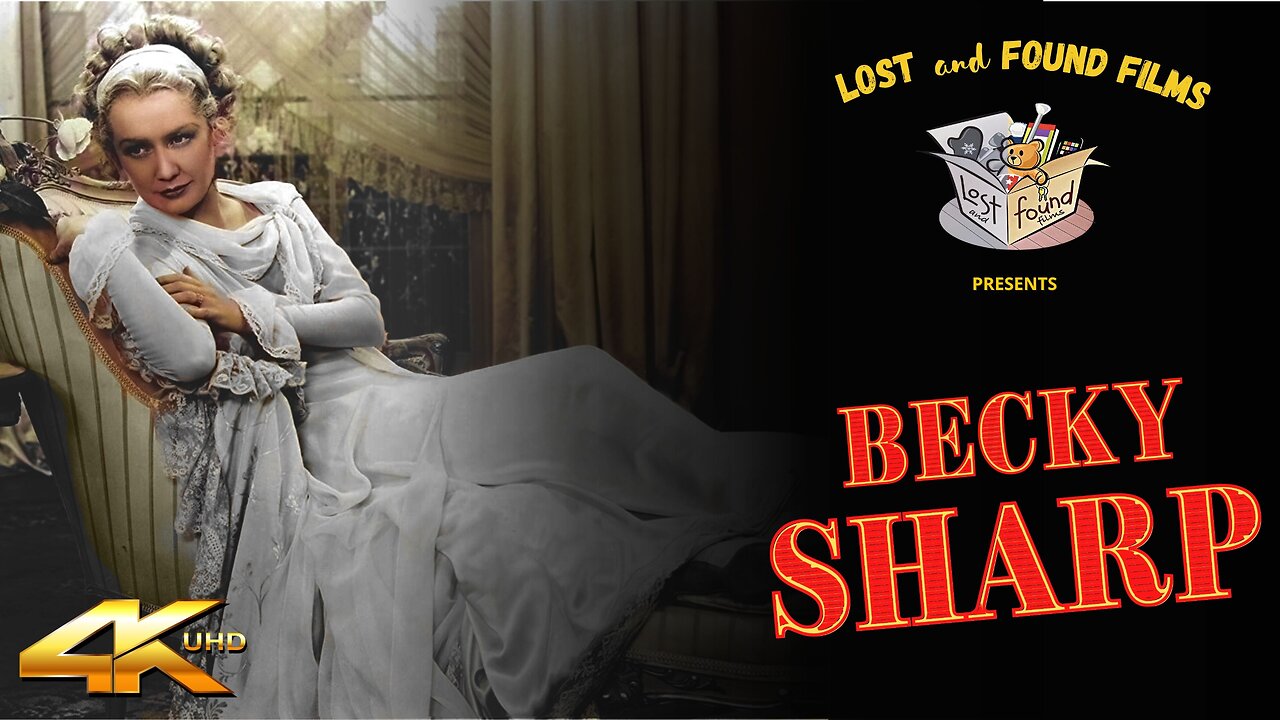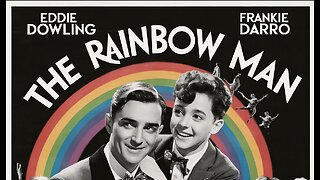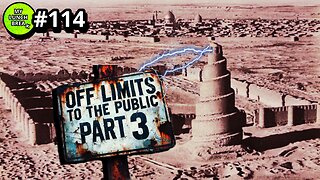Premium Only Content

BECKY SHARP (1935) Miriam Hopkins & Cedric Hardwicke | Drama, Romance, War | 4K UHD | Technicolor
Becky Sharp is a 1935 American Technicolor historical drama film directed by Rouben Mamoulian and starring Miriam Hopkins who was nominated for the Best Actress Oscar. Other supporting cast were William Faversham, Frances Dee, Cedric Hardwicke, Billie Burke, Alison Skipworth, Nigel Bruce, and Alan Mowbray.
SYNOPSIS
Against the backdrop of Napoleon's Waterloo campaign, an ambitious woman from a family of entertainers begins a destructive climb up the social ladder.
Becky Sharp (Miriam Hopkins), a socially ambitious young lady, manages to survive during the background years of Napoleon's defeat at Waterloo. Becky gradually climbs the British social ladder, overcoming poverty and class distinctions, through her best friend Amelia Sedley (Frances Dee), praising any rich man who would listen.
In her efforts to advance herself, she manages to connect with a number of gentlemen: the Marquis of Steyne (Cedric Hardwicke), Joseph Sedley (Nigel Bruce), Rawdon Crawley (Alan Mowbray), and George Osborne (G. P. Huntley Jr), the husband of Amelia.
She rises to the top of British society but becomes the scourge of the social circle, offending influential ladies such as Lady Bareacres (Billie Burke).
Sharp falls into the humiliation of singing for her meals in a beer hall, but she never stays down for long.
CAST & CREW
Miriam Hopkins as Becky Sharp
Frances Dee as Amelia Sedley
Cedric Hardwicke as Marquis of Steyne
Billie Burke as Lady Bareacres
Alison Skipworth as Miss Crawley
Nigel Bruce as Joseph Sedley
Alan Mowbray as Rawdon Crawley
G. P. Huntley Jr. as George Osborne
William Stack as Pitt Crawley
George Hassell as Sir Pitt Crawley
William Faversham as Duke of Wellington
Charles Richman as General Tufto
Doris Lloyd as Duchess of Richmond
Colin Tapley as William Dobbin
Leonard Mudie as Tarquin
May Beatty as Briggs
Charles Coleman as Bowles
Bunny Beatty as Lady Blanche
Finis Barton as Miss Flowery
Olaf Hytten as The Prince Regent
Pauline Garon as Fifine
James 'Hambone' Robinson as Sedley's page
Elspeth Dudgeon as Miss Pinkerton
Tempe Pigott as The Charwoman
Ottola Nesmith as Lady Jane Crawley
Directed by Rouben Mamoulian
Screenplay by Francis Edward Faragoh, Story by William Makepeace Thackeray, Langdon Mitchell, Based on Vanity Fair
1848 novel by William Makepeace Thackeray
Produced by Kenneth Macgowan, Rouben Mamoulian, Robert Edmond Jones
Cinematography Ray Rennahan
Edited by Archie Marshek
Music by Roy Webb, William Faversham
Production company Pioneer Pictures
Distributed by RKO Radio Pictures
Release date June 13, 1935
Running time 84 minutes
Country United States
Language English
NOTES
John Hay "Jock" Whitney and Cornelius Vanderbilt Whitney formed Pioneer Pictures specifically to produce color films, and signed a contract to release Pioneer films through RKO Radio Pictures.
After producing La Cucaracha, Becky Sharp, and Dancing Pirate (1936), the Whitneys and David O. Selznick formed Selznick International Pictures. Two Selznick International films, A Star Is Born and Nothing Sacred (both 1937), were produced by Selznick, copyrighted by Pioneer Pictures, and released through United Artists rather than RKO. The film went public domain in 1963 after the copyright lapsed and was not renewed.
Becky Sharp was the first feature film to use the three-strip Technicolor process, which created a separate film register for each of the three primary colors, for the entirety of the film.
Writing for The Spectator, Graham Greene raved that "colour is everything here" and characterizing its use in the film as "a triumph". Although Greene complained that the Technicolor "plays havoc with the women's faces", leveled criticism at Hopkins for her "indecisive acting", and noted that he had found the film's climax in Bath to be "absurd" and "silly", he described these minor complaints as "ungrateful" and his overall impression was that the film gave "delight to the eye".
For many years, the original three-color Technicolor version of the film was not available for viewing, though a 16 millimeter version was available. This version had been printed (poorly) on two-color Cinecolor stock which did not accurately reproduce the colors of the original film. The smaller film gauge also resulted in a grainier, inferior image.
In the 1980s, the UCLA Film and Television Archive restored the film, under the supervision of archivist Robert Gitt. Rouben Mamoulian appeared at the premiere of the restored print at the Academy of Motion Picture Arts and Sciences theatre in Beverly Hills.
-
 0:33
0:33
Lost n Found Films
4 hours agoTHE RAINBOW MAN (1929) Trailer | Cinema Gem
12 -
 1:50:38
1:50:38
Mally_Mouse
7 hours agoSaturday Shenanigans!! - Let's Play: Mario Party Jamboree
40.5K -
 1:13:00
1:13:00
Patriots With Grit
11 hours agoWill Americans Rise Up? | Jeff Calhoun
32.9K10 -
 14:55
14:55
Exploring With Nug
11 hours ago $10.50 earnedWe Found Semi Truck Containers While Searching for Missing Man!
50.7K7 -
 27:57
27:57
MYLUNCHBREAK CHANNEL PAGE
19 hours agoOff Limits to the Public - Pt 3
108K62 -
 38:07
38:07
Michael Franzese
12 hours agoLeaving Organized Crime and Uncovering Mob in Politics: Tudor Dixon and Michael Franzese
91.6K15 -
 2:42:54
2:42:54
Jewels Jones Live ®
2 days agoAMERICA IS BACK | A Political Rendezvous - Ep. 111
73.1K48 -
 8:47:33
8:47:33
Due Dissidence
1 day agoLIVE: Workers Strike Back Conference ft. Chris Hedges, Jill Stein, Kshama Sawant, and More!
113K57 -
 8:36:37
8:36:37
Right Side Broadcasting Network
5 days agoLIVE REPLAY: CPAC 2025 Day Three with President Donald J. Trump - 2/22/25
455K101 -
 1:05:34
1:05:34
The Big Mig™
20 hours agoConfirmed Kash Patel New FBI Director, Bring On The Pain |EP483
108K31